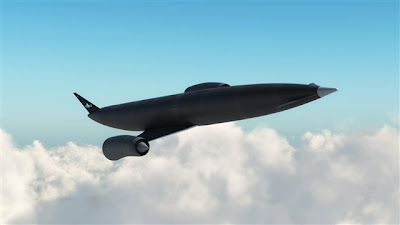The "CanJam" manipulator allows a user to steer satellites using a wheel with three degrees of freedom, tilting forward and backward, swiveling left and right, and pivoting side to side.
Gyroscope-aided bikes and cars may one day rule the road but before the technology reaches the ground, a University at Buffalo research team will test similar equipment in outer space.
The Canfield joint actuation manipulator, nicknamed "CanJam" by the researchers, was selected by NASA to join the first commercial research flight on Virgin Galactic's SpaceShipTwo.
The tennis-ball sized device was designed by Manoranjan Majji, lead researcher and assistant professor in the Department of Mechanical and Aerospace Engineering.
"CanJam" can automatically control a satellite using a Canfield joint, a spherical joint that can point anywhere on a hemisphere, and an automated program that stabilizes the device when disturbed and a wheel.
The manipulator allows a user to steer satellites using a wheel with three degrees of freedom, tilting forward and backward, swiveling left and right and pivoting side to side.
Unlike traditional joints, the device also contains three motors as a failsafe in the chance one motor fails.
Traditional technologies used by NASA and other agencies occasionally don't produce the necessary torque to rotate aircrafts, also known as singularities, which make it difficult to build attitude control systems.
Due to its design, the "CanJam" system doesn't create singularities, simplifying attitude control, says Majji.
If the NASA test flight is successful, the Canfield joint actuation manipulator designed by Manoranjan Majji could be useful in directing the flight of satellites or helicopters by replacing the wheel with propellers.
Credit: Douglas Levere
The UB project was chosen along with 11 other experiments through NASA's Flight Opportunities Program, which works with commercial companies, universities and government organizations to test innovative space technologies. NASA funded research and development of the designs.
"Projects like this enable us to build the next generation of agile space systems and aircraft," says Majji.
"In addition to aerospace systems, this technology has spill-over effects into the automobile industry. The future generation of cars and bikes are going to have control moment gyroscopes, and we're at the core of fundamental research that enables that sort of technology."
Majji's CanJam design was inspired by use of the Canfield joint in space thrusters. In his device, gyroscopic forces generated when the joint shifts create reaction torques that cause inverted satellite movement.
In the NASA flight test, once the spacecraft reaches microgravity, the device will point to a designated direction and a linear actuator will repeatedly push the manipulator out of place, destabilizing it.
The device will then automatically stabilise itself, correcting the pointing errors. Flight computers will record the accuracy of the manipulator after disturbances.
If successful, the manipulator could be useful for directing the flight of satellites or helicopters by replacing the wheel with propellers. Eventually, the technology will find its way onto cars and bikes, says Majji.
Research conducted through Majji's lab also focuses on designing aerospace vehicle sensors and actuators, and developing autopilot and tracking programs for unmanned aerial vehicles.
Gyroscope-aided bikes and cars may one day rule the road but before the technology reaches the ground, a University at Buffalo research team will test similar equipment in outer space.
The Canfield joint actuation manipulator, nicknamed "CanJam" by the researchers, was selected by NASA to join the first commercial research flight on Virgin Galactic's SpaceShipTwo.
The tennis-ball sized device was designed by Manoranjan Majji, lead researcher and assistant professor in the Department of Mechanical and Aerospace Engineering.
"CanJam" can automatically control a satellite using a Canfield joint, a spherical joint that can point anywhere on a hemisphere, and an automated program that stabilizes the device when disturbed and a wheel.
The manipulator allows a user to steer satellites using a wheel with three degrees of freedom, tilting forward and backward, swiveling left and right and pivoting side to side.
Unlike traditional joints, the device also contains three motors as a failsafe in the chance one motor fails.
Traditional technologies used by NASA and other agencies occasionally don't produce the necessary torque to rotate aircrafts, also known as singularities, which make it difficult to build attitude control systems.
Due to its design, the "CanJam" system doesn't create singularities, simplifying attitude control, says Majji.
If the NASA test flight is successful, the Canfield joint actuation manipulator designed by Manoranjan Majji could be useful in directing the flight of satellites or helicopters by replacing the wheel with propellers.
Credit: Douglas Levere
The UB project was chosen along with 11 other experiments through NASA's Flight Opportunities Program, which works with commercial companies, universities and government organizations to test innovative space technologies. NASA funded research and development of the designs.
"Projects like this enable us to build the next generation of agile space systems and aircraft," says Majji.
"In addition to aerospace systems, this technology has spill-over effects into the automobile industry. The future generation of cars and bikes are going to have control moment gyroscopes, and we're at the core of fundamental research that enables that sort of technology."
Majji's CanJam design was inspired by use of the Canfield joint in space thrusters. In his device, gyroscopic forces generated when the joint shifts create reaction torques that cause inverted satellite movement.
In the NASA flight test, once the spacecraft reaches microgravity, the device will point to a designated direction and a linear actuator will repeatedly push the manipulator out of place, destabilizing it.
The device will then automatically stabilise itself, correcting the pointing errors. Flight computers will record the accuracy of the manipulator after disturbances.
If successful, the manipulator could be useful for directing the flight of satellites or helicopters by replacing the wheel with propellers. Eventually, the technology will find its way onto cars and bikes, says Majji.
Research conducted through Majji's lab also focuses on designing aerospace vehicle sensors and actuators, and developing autopilot and tracking programs for unmanned aerial vehicles.

































